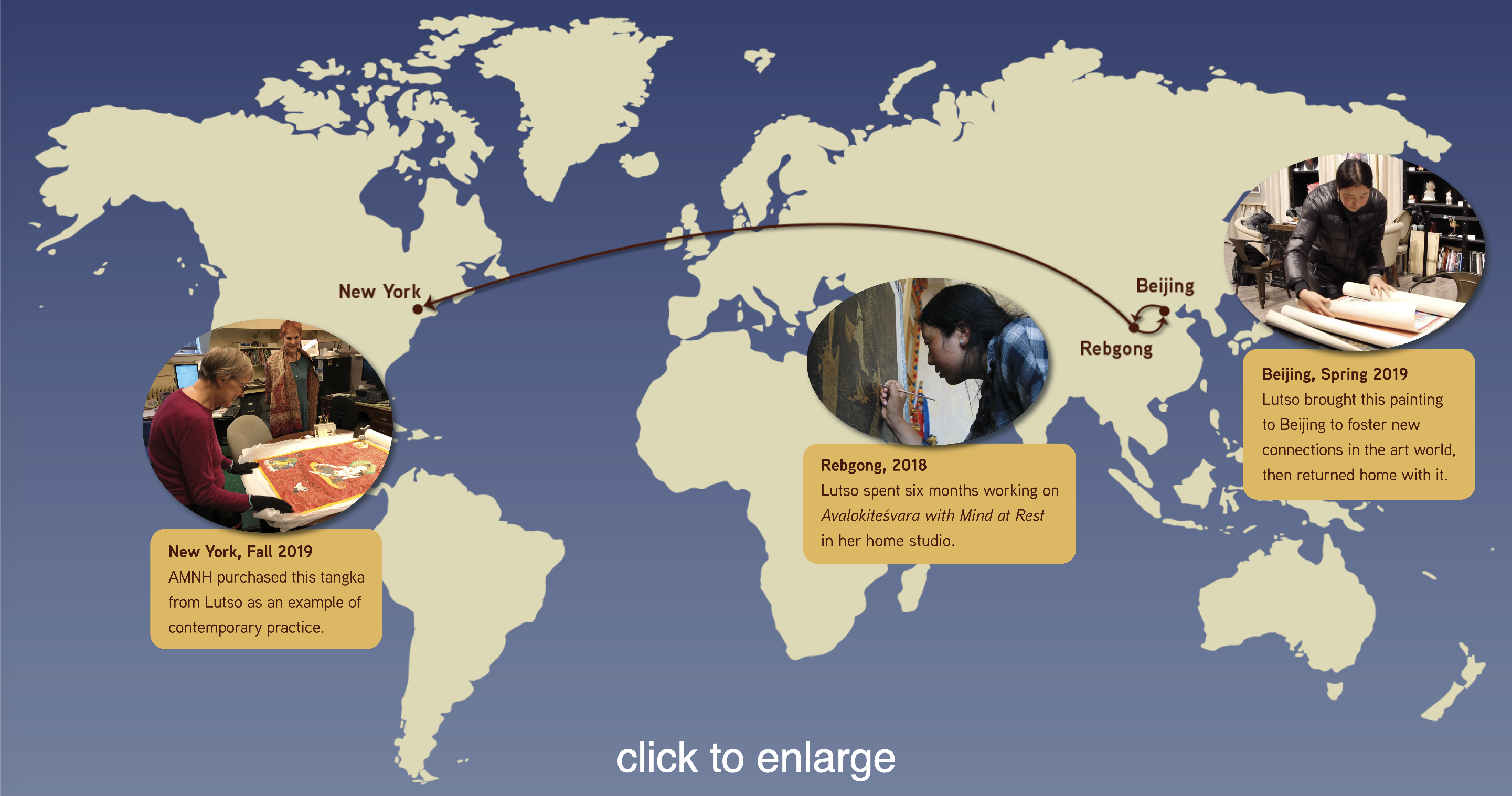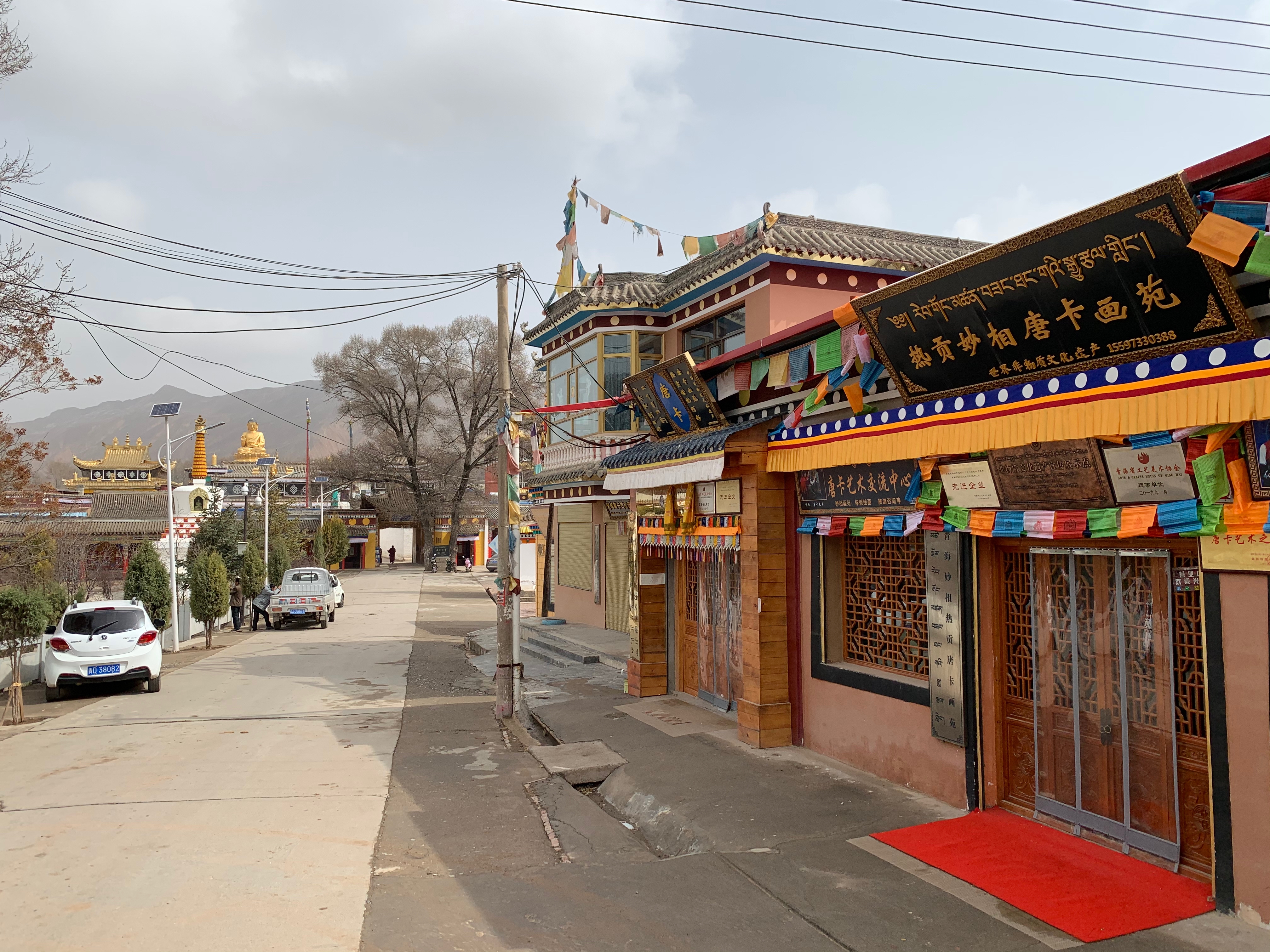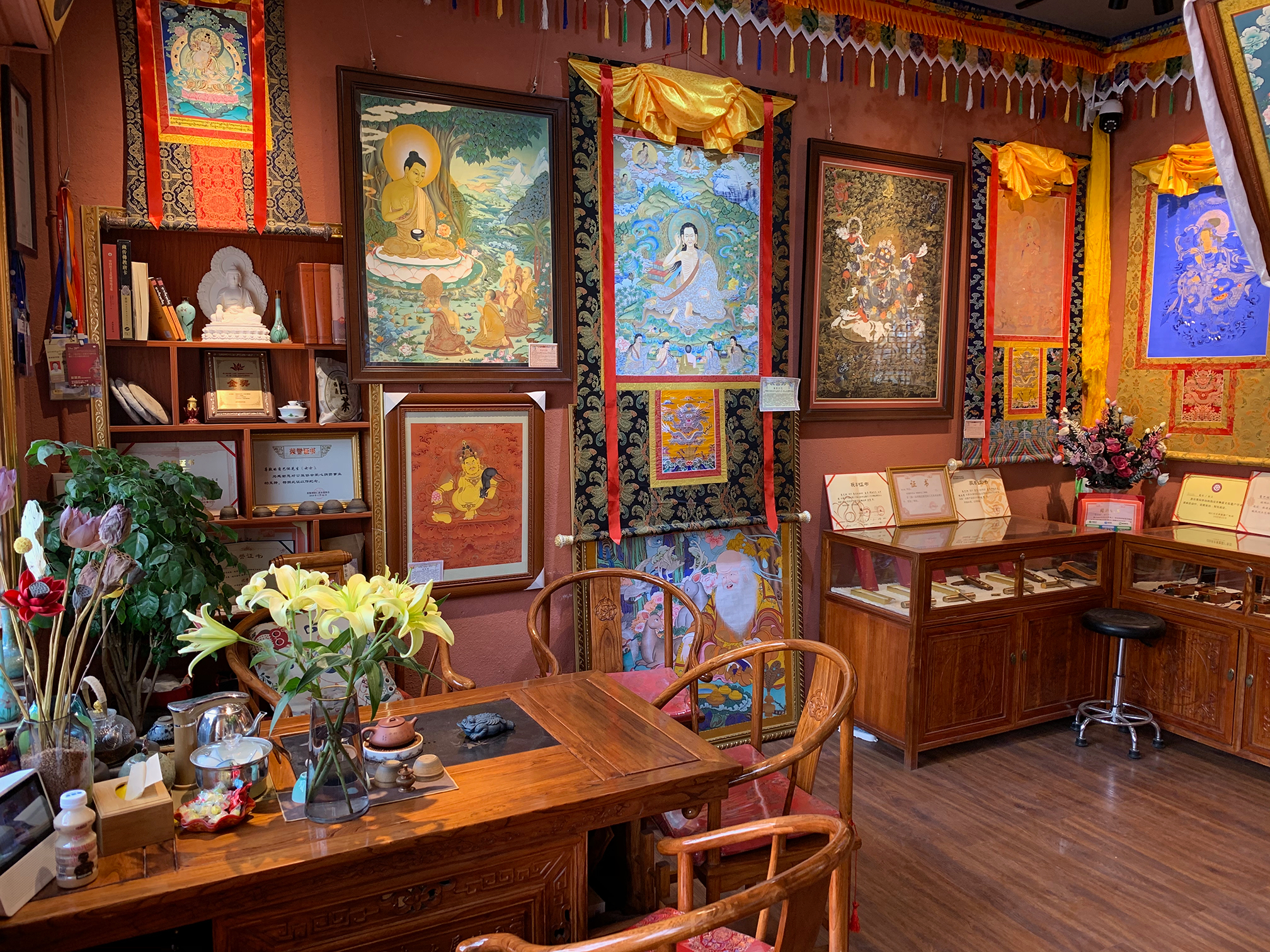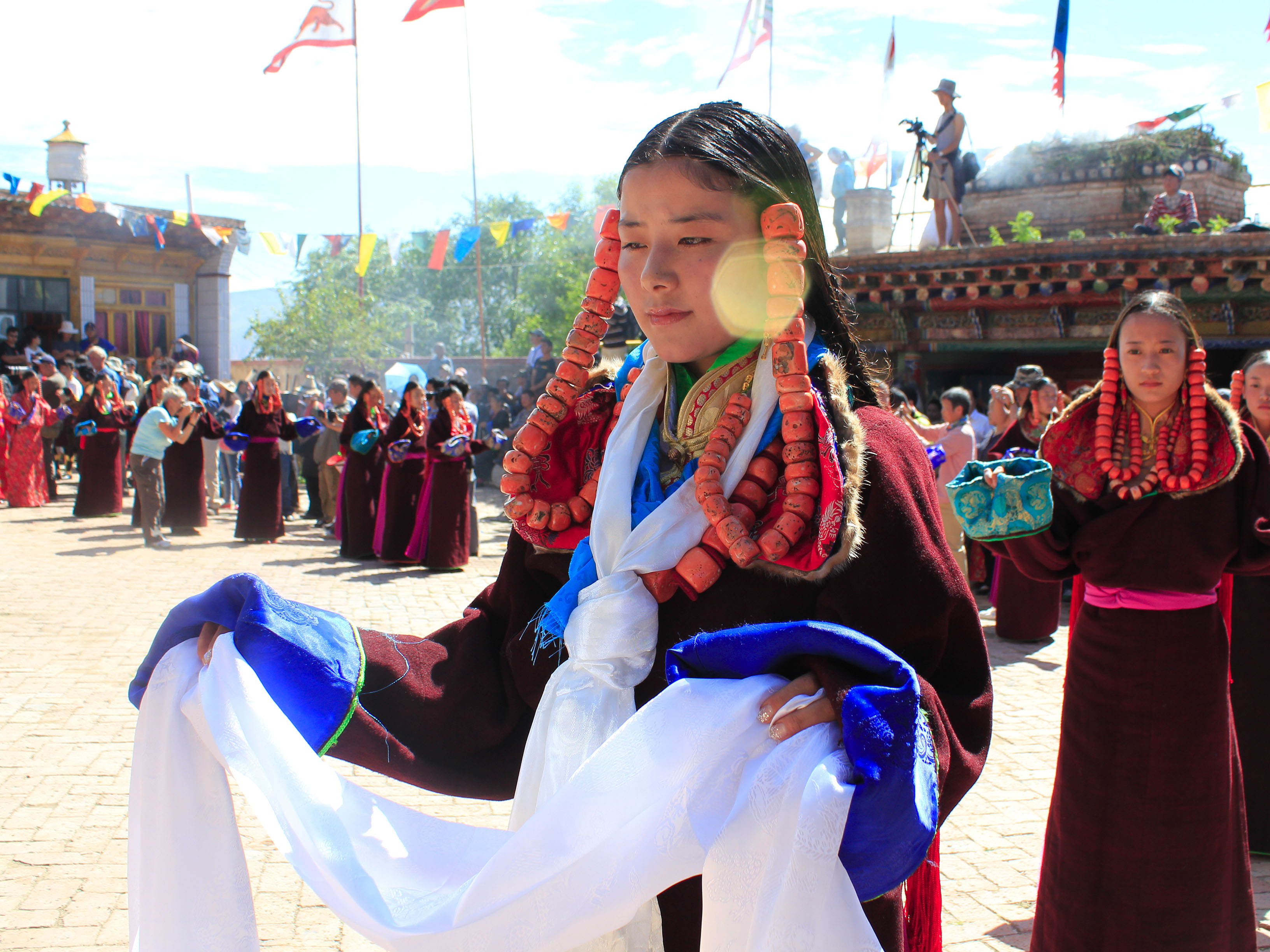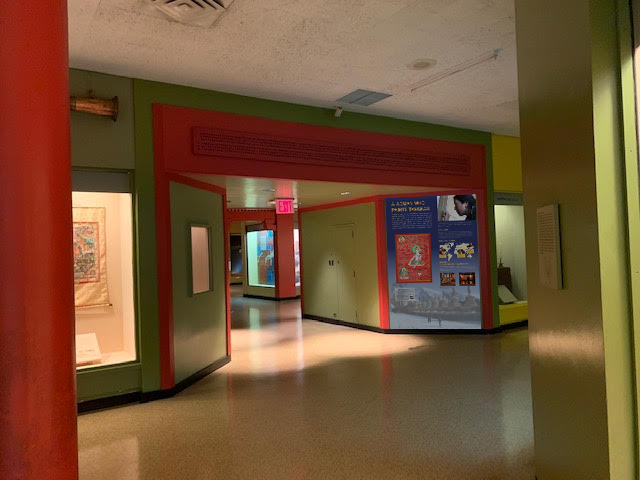A WOMAN WHO PAINTS TANGKAS
Digital companion to American Museum of Natural History exhibit, 2021The Tangka
The Tibetan tangka (ཐང་ཀ) below—a Buddhist scroll painting—demonstrates the talent of its painter, Lutsojam (ཀླུ་མཚོ་བྱམས།). Known as Lutso, she is one of the few female tangka painters in the community of Rebgong in Northwest China. Although crafted for the art market, this tangka was consecrated in a monastery following Buddhist practice.
Avalokiteśvara with Mind at Rest, 2018
Lutsojam (ཀླུ་མཚོ་བྱམས།), known as Lutso or 伦措 (b. 1993)
Rebgong, Huangnan Tibetan Autonomous Prefecture, Qinghai Province, PRC
Natural mineral pigments on canvas
AMNH 70.3/8090
The Painter
When a global market for Rebgong tangkas developed in the early 2000s, women began to participate in their production. Fortuitously, Lutso’s desire to become a painter was affirmed by a diviner when she was a child. She is the first woman in Rebgong to operate a tangka studio and train her own apprentices. Marketing her paintings by social media, Lutso uses her artistic and teaching skills to help support her son and wider family.
Art school
In 2013 Lutso was one of five female students in an art school in Seng ge gshong village; by 2019 the school had 13 female students.
(Language: Amdo Tibetan, Seng ge gshong dialect)
Farm
Footage from 2018 shows Lutso in her home village (Tho’a kya), conversing with neighbors and helping with the harvest.
(Language: Amdo Tibetan)
Gallery
In 2019, Lutso took her work to a Beijing gallery, hoping to make a business connection.
(Language: Mandarin)
Interview: Lutso in Her Own Words
Lutso generously agreed to answer questions compiled by students Magdalena Polak, Dani Lin, and professors Ming Xue and Laurel Kendall. Professor Xue, who has known Lutso since 2013, interviewed her on February 25, 2021.
Click here to read
Rebgong (རེབ་གོང་།)
A Dynamic Center for Tangka Production
In 2009, UNESCO listed Rebgong art as an Intangible Cultural Heritage of Humanity. Local people commission Rebgong tangkas for veneration and to accumulate Buddhist merit in this life and the next. Clients within and beyond China also purchase them as meditation aids or for their aesthetic appeal.
Tangka shops built onto private houses near Lower Wutun Monastery (སེང་གེ་གཤོང་མ་མགོ་དགོན་པ་དགའ་ལྡན་ཕུན་ཚོགས་ཆོས་གླིང་།), 2021
Tamgrin Tsering (རྟ་མགྲིན་ཚེ་རིང་།)
A shop in Seng ge gshong (སེང་གེ་གཤོང་།) village in Rebgong displays various tangkas for sale, 2021.
Tamgrin Tsering (རྟ་མགྲིན་ཚེ་རིང་།)
Pilgrims circumambulate Rongwo Monastery (རོང་བོ་དགོན་པ་བདེ་ཆེན་ཆོས་འཁོར་གླིང་།) in Rebgong, 2011.
Ming Xue
Partial view of Ska sar (སྐ་སར།) village and the valley of the Rongwo Guchu River (རོང་བོ་དགུ་ཆུ།), 2011.
Ming Xue
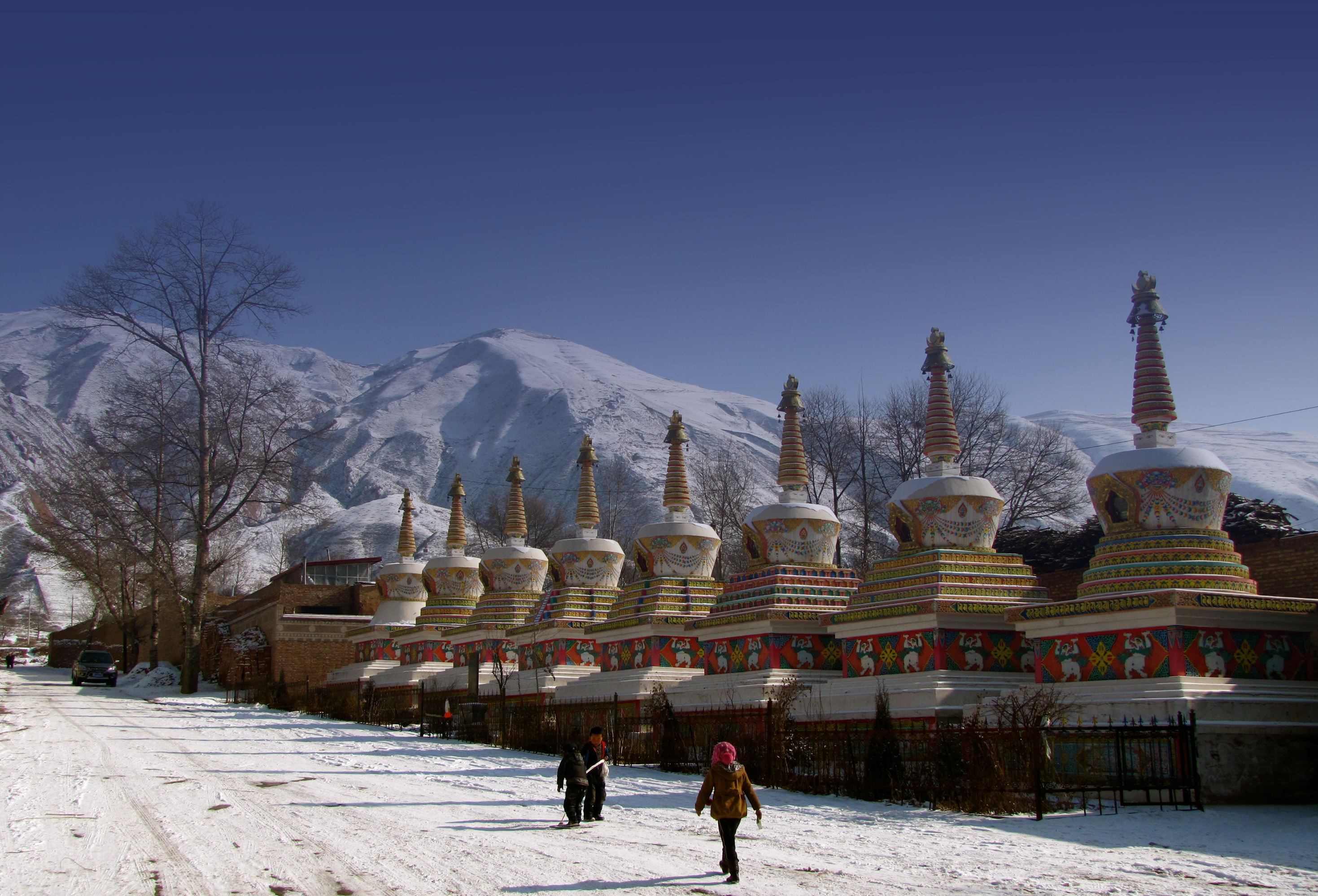
The eight stupas in Seng ge gshong (སེང་གེ་གཤོང་།) village, Rebgong, 2012. Stupas are Buddhist monuments that often hold sacred relics.
Ming Xue
Resources
Catanese, Alex John. 2019. Buddha in the Marketplace: The Commodification of Buddhist Objects in Tibet. Charlottesville: University of Virginia Press.
Harris, Clare. 2012. The Museum on the Roof of the World: Art, Politics, and the Representation of Tibet. Chicago: University of Chicago Press.
Linrothe, Robert. 2001. “Creativity, Freedom, and Control in the Contemporary Renaissance of Rebgong Painting.” The Tibet Journal 26(3): 5-90.
Makley, Charlene. 2018. The Battle for Fortune: State-led Development, Personhood, and Power among Tibetans in China. Ithaca: Cornell University Press.
Stevenson, Mark. 2002. “Art and Life in Amdo Rebgong since 1978.” In Amdo Tibetans in Transition, edited by Toni Huber, 197-219. Kathmandu: Vajra Publications.
Xue, Ming. 2014. “People Who Paint the Buddha.” Anthropology Now 6(1): 65-71.
Xue, Ming. 2019. A Woman Who Paints Thangkas (trailer), 26min, color.
About the Program
The M.A. in Museum Anthropology is offered jointly by the Columbia Department of Anthropology and the American Museum of Natural History, combining the strengths of these premier anthropological departments, collections and archives.
Students enrolled in the program for 2020–2021 curated and designed A Woman Who Paints Tangkas, working with the professors. Students were introduced to exhibition design, from concept through production, by AMNH staff and through virtual studio and museum visits outside of AMNH.
To learn more about the Museum Anthropology program, click here.
Credits
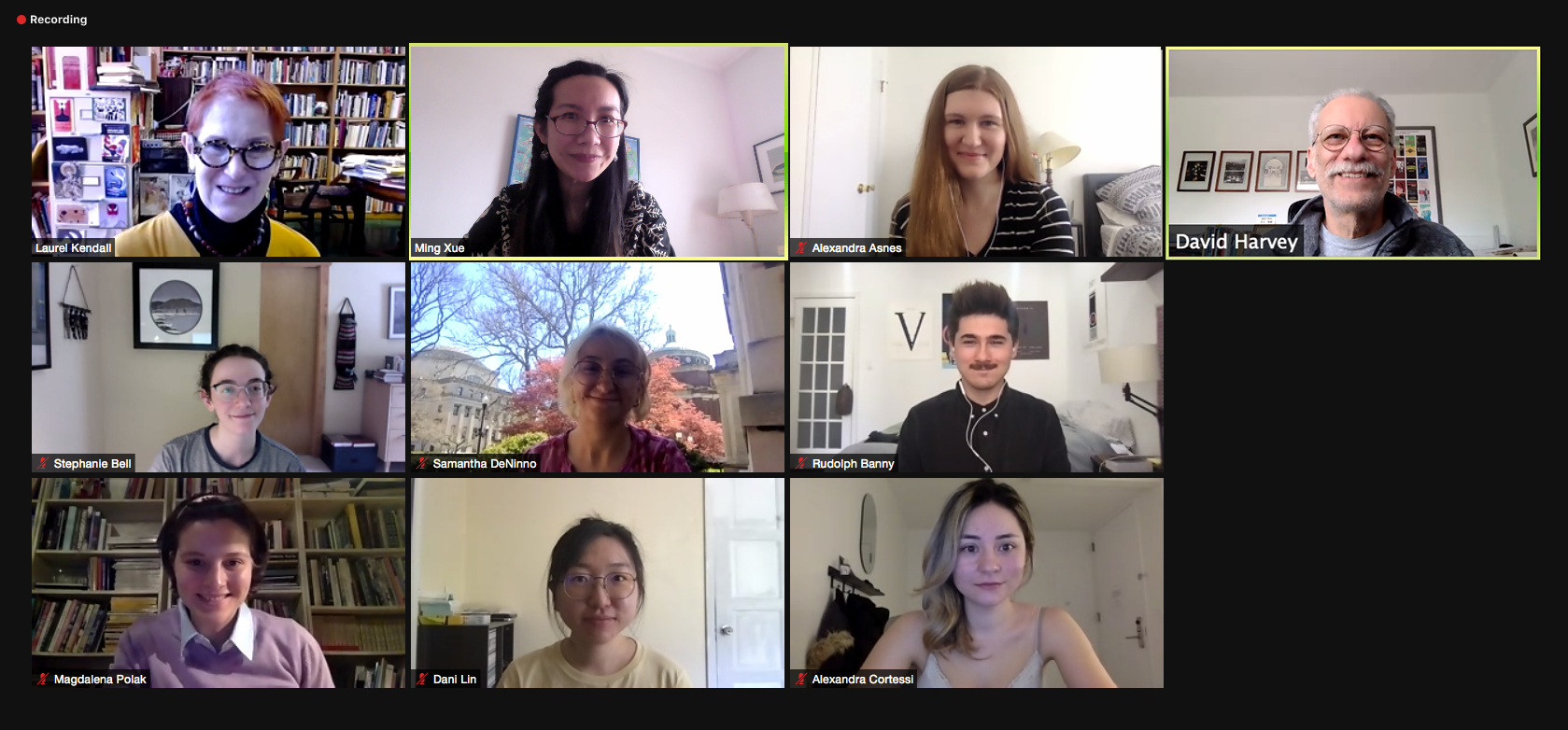
Curation, Writing, Exhibit Design
Alexandra Asnes
Rudy Banny
Stephanie Bell
Alexandra Cortessi
Samantha DeNinno
Dani Lin
Magdalena Polak
Professors
Laurel Kendall, Chair, Division of Anthropology and Curator, Asian Ethnographic Collections, AMNH. Adjunct Professor, Columbia University
David Harvey, Adjunct Professor, Columbia University. Former Senior Vice President of Exhibition, AMNH
Ming Xue, Research Associate, AMNH. Adjunct Professor, Columbia University
Editor
Laura Allen
Graphics
Danielle Forte
Web
Brett Peterson, Assistant Director of Media and Interactives, AMNH
Photos and Video
Ming Xue
Tamgrin Tsering (རྟ་མགྲིན་ཚེ་རིང་།)
AMNH Division of Anthropology
John Hansen, Collections Manager
Judith Levinson, Director of Conservation
Barry Landua, Systems Manager and Manager of Digital Imaging
Mourrice Papi, Photographer
Laila Williamson, Associate
AMNH Exhibition
Lauri Halderman, Vice President of Exhibition
Melissa Posen, Senior Director of Exhibition and Exhibition Capital Projects
Sasha Nemecek, Director of Exhibition Interpretation
Joel Sweimler, Senior Developer
Columbia University
Brian Boyd, Director of Museum Anthropology
Zoe Crossland, Associate Professor of Anthropology and Director, Center for Archaeology
Courtney Hooper, Director, Academic Administration and Finance, Department of Anthropology
Jeanne N. Roche, Director of Academic Administration & Finance
David Scott, Ruth and William Lubic Professor and Chair, Department of Anthropology
Garen Tchopourian, Web Developer, Faculty of Arts and Sciences
Special thanks to
Lutsojam (ཀླུ་མཚོ་བྱམས།) and her family
Jampa (བྱམས་པ།), The Cultural Palace of Nationalities (民族文化宫) in Beijing
Tashi Gyatso (བཀྲ་ཤིས་རྒྱ་མཚོ།), Rebgong Nāgārjuna Art School (རེབ་གོང་ཀླུ་སྒྲུབ་སྒྱུ་རྩལ་གླིང་།)
Chödrak (ཆོས་གྲགས།), Rebgong Nāgārjuna Art School
Wande Gyatso (བན་དེ་རྒྱ་མཚོ།), Rebgong Nāgārjuna Art School
Tamgrin Tsering (རྟ་མགྲིན་ཚེ་རིང་།), Rebgong Nāgārjuna Art School
Elena Pakhoutova, Rubin Museum of Art
Andrew Quintman, Department of Religion & College of East Asian Studies, Wesleyan University
Gerald Kozicz, Institute of Architecture and Media, Graz University of Technology
Di Luo, Art History and Architectural Studies, Connecticut College
Serinity Young, Classical, Middle Eastern, and Asian Languages and Cultures, Queens College
Elliott Ubelhor, Yenching Academy of Peking University (北京大学燕京学堂)
This project was made possible with the generous support of the Columbia University Department of Anthropology and in-kind support by the American Museum of Natural History.

